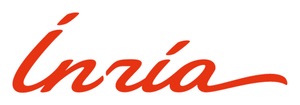Post-Doc position available
Multi-scale discrete representations of protein structures for protein-RNA docking
Keywords: Molecular modeling, Computational biophysics, structural bioinformatics, docking, methods development
Location: LORIA lab (Lorraine University – CNRS – INRIA ), Nancy, France. Remote working possible
Contact: isaure.chauvot-de-beauchene (at) loria.fr
Start: Fall/Winter 2023-2024, depending on candidate availability
Duration: 1st period of 12 months, with opportunities for 12 months prolongation
Summary
The aim is the development of innovative computational tools for modeling the structure and dynamics of highly flexible protein –nucleic acids assemblies. One main focus will be the development of combinatorial representations of protein shape variability, to be implemented in protein-DNA/RNA docking tools developed in the team [NAR_2016, PloS_2016]. These tools will be applied to large DNA – protein complexes involved in the transmission of bacterial resistance, in the context of a collaborative project with experimental biologist (DynAMic lab, UL – INRAE, Nancy).
Context
We have recently developed an original methodology to build atomic representations of single-stranded RNA to a protein, using a fragment-based approach that address the high flexibility of ssRNA [ORCA-3D project]. The method is uniquely capable of providing accurate structural model from only protein structure and RNA sequence. The goal of this project is to generalize this method towards proteins of approximately known structure from homology.
Many RNA/DNA-binding proteins are made of several domains linked by flexible loops and that can be differently oriented; They contain themselves flexible loops with multiple possible conformations; and each amino-acid in those loops can adopt different orientations.
Molecular docking consists in predicting the 3D structure of a molecular assembly from the 3D structure of its constituents, by correctly positioning them relatively to each other. A main difficulty of docking is that molecules can change their 3D shape upon binding. In classical docking, an ensemble of protein conformations can be used in order to increase the chances to get close enough to the protein bound form. But this requires a combinatorial sampling of each protein region and at each resolution (domain > amino-acid > atom), that cannot be exhaustive due to the high-dimensional search space.
Strategy
In our fragment-based approach, the conformations of each binding site of the protein can be sampled independently, and their compatibility can assessed after docking, during the linear assembly of docked fragments.To take advantage of this linearity, we will represent the protein as a graph of possible local conformations at different scales, with their pairwise compatibilities (e.g. no atomic clashes).
If the precision obtained previously is not satisfying enough, we will apply data-driven docking: we will add as soft constraints some low resolution data on the geometry of the complex, that could be obtained experimentally (SAXS, NMR).
Working environment
The CAPSID research group develops computational tools for data mining on macromolecular assemblies and for 3D modeling of those assemblies, by means of classical molecular dynamics and docking, as well as deep learning approaches. We are part of an informatics lab (LORIA), and have several collaborations with experimental biology/biophysics teams.
Eligibility
The project is interdisciplinary. Candidates must have (or be about to get) a PhD degree in any of the relevant disciplines: computer science, (bio-)physics or bio-informatics.
The day-to-day work involves a lot of programming on atomic representations of proteins and nucleic acids. Strong programming skills (preferentially Python and/or C++) are required. Skills in discrete mathematics, algorithmic, statistics are very desirable, as well as knowledge of molecular structures. Experience in students supervision would be appreciated.
Candidates must be fluent either in French or in English.
Funding of the positions
The position is initially funded by the LORIA lab for 12 months. A prolongation will be demanded to INRIA at the annual campaign in spring 2024 (the selection pressure on post-docs is very low, often with less candidates than grants). The gross salary is 2,500 € per month.
Application procedure
Applications should be sent in PDF format and must include a detailed recent CV, a list of publications, a cover letter describing the candidate’s research interest and expertise relevant to the subject, the name of at least 3 scientists willing to provide a letter of recommendation, and if possible a link to a personal code repository (s.a. github, gitlab…)



